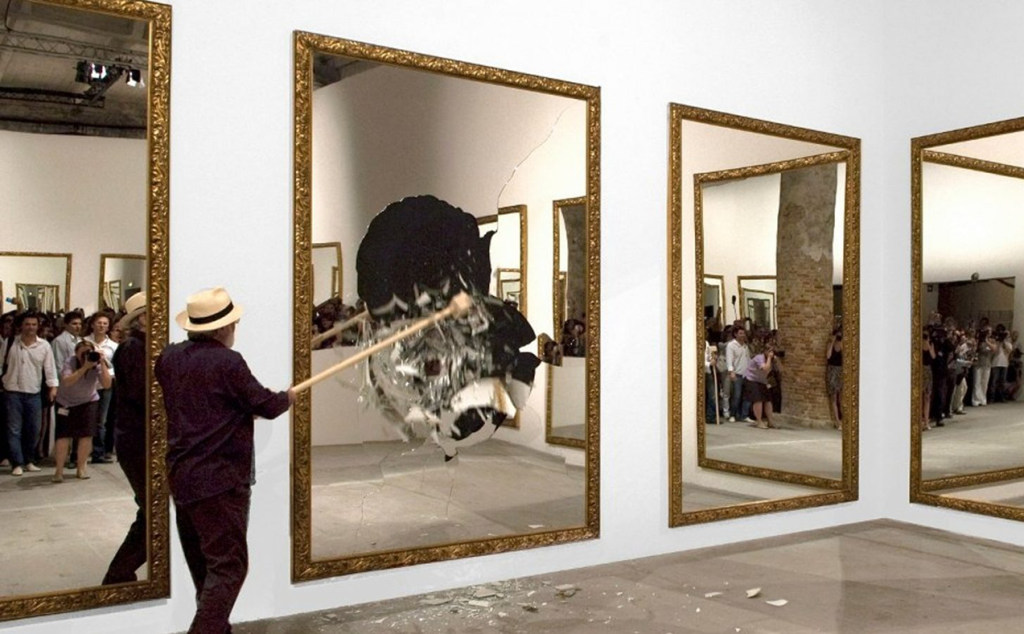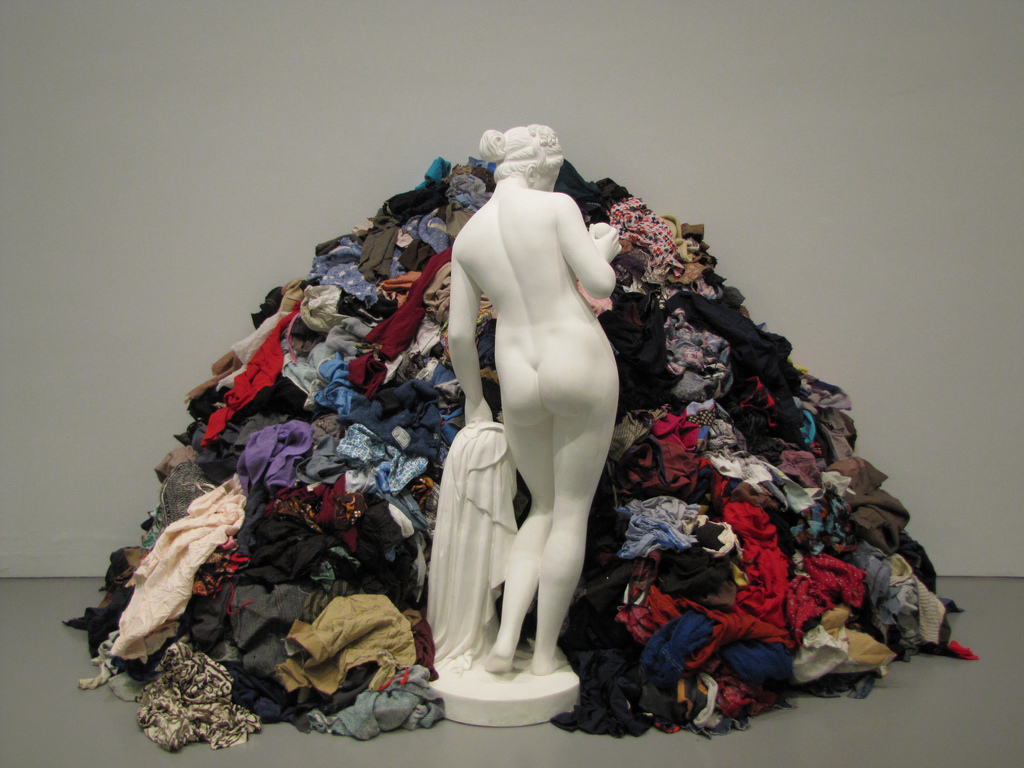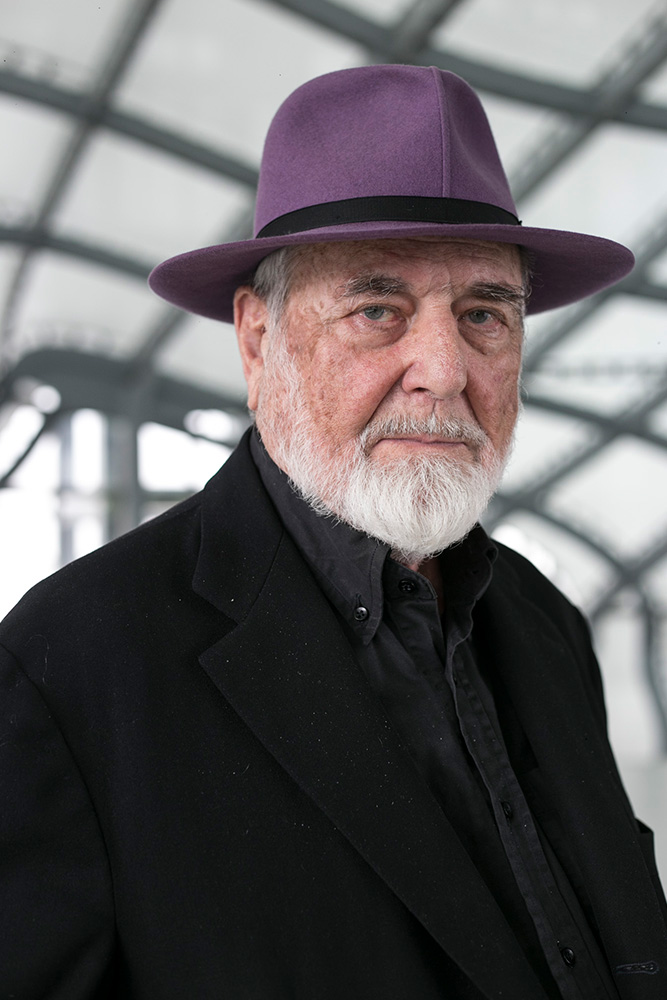Michelangelo Pistoletto, one of the most international Italian artists of all time, began his artistic journey by painting what he had most at hand: himself.
Who knows if he expected that the study of his own individuality would lead him to the discovery of infinity.
Not just metaphorically.
In fact, it is precisely starting from the symbol of infinity that, at the height of his personal maturity, he conceives a new version of the lemniscate.
This new form will be called the Terzo Paradiso and will be reproduced dozens of times all over the world, in the name of the artist. Astronaut Paolo Nespoli even took him to space.
But let’s start from the beginning.
The artistic genesis of Pistoletto
1933. Biella.
This is where the life of the artist Michelangelo Pistoletto begins, son of a painter and restorer father. He is immediately initiated to the knowledge of the artists, thanks to the works that he saw passing through the restoration workshop. Despite his father’s conservative influence, his vocation calls the young Pistoletto towards a more innovative art.
In fact, the works of contemporary artists and the debate they arouse stimulate him to seek a personal answer to the existential questions that he sees expressed in the various artistic currents.
The 1950s represent the true spark of Michelangelo Pistoletto’s artistic experience. It is at this time that the first self-portraits of him are exhibited.
But how is it possible to go from self-portraits to the famous Reintegrated Apple exhibited outside the Central Station of Milan, which represents a denunciation of consumerism? Is it possible that these works have something in common?
Michelangelo Pistoletto: an artist at the service of the community
Well yes.
Michelangelo Pistoletto made sure that all the works produced by his artistic experience give as a sum a single great work of art, as if every single work constituted the piece of a single final artistic organism.
This result is not the result of a pre-established design, but the natural consequence of an expressive research pursued intimately, yet shared on a universal scale.
In other words, Michelangelo Pistoletto arrived at a collective conclusion capable of placing himself at the service of humanity.
Humanity is made up of single individuals, each with his own interiority, his own character. Each surrounded by a different environment and different relationships.
Michelangelo Pistoletto decides to start an investigation on his own, and does so with a self-portrait. But what does it take to look at your own image and reproduce it? The answer is the mirror. And now this second element is added by the artist among his creative tools right from the start.
The self-portrait, as well as the mirror, in fact, are investigated by Pistoletto throughout his artistic career. Mirror represents the individual, but also the surrounding context. The movement of what is reflected in it is imprinted for an instant on the surface of the mirror, as if it were the frame of a moment.

The magic mirror by Michelangelo Pistoletto
In 1961 comes the turning point that will lead to the Quadri specchianti. After having spread a black background and a thick layer of transparent varnish on the canvas, he suddenly realizes that he can see himself directly in the canvas, without having to use the mirror to observe himself.
In 1966, speaking of that episode, Michelangelo Pistoletto wrote:
“The painted man came forward as alive in the living space of the environment, but the real protagonist was the instantaneous relationship that was created between the viewer, his reflection and the painted figure, in an ever” present “movement that concentrated in itself the past and the future to such an extent as to make one doubt their existence: it was the dimension of time. “
The die was cast. From that moment on, the artist has all the key elements that will distinguish his artistic personality. He thus begins to work on his relationship with scientific objectivity, on the polarity between the individual and the environment and on the value of the present moment.
I Paradisi
March 2004.
Michelangelo Pistoletto is withdrawing his honorary degree in Political Science from the University of Turin and announces to the public that the Third Paradise will be the next phase of his work.
The symbol of the Third Paradise is a reworking of the mathematical sign of infinity. Between the two contiguous circles, which in this poetic represent the two nature-artifice antipodes, a third central circle is inserted which represents the generative womb of a new humanity.Il Terzo Paradiso.
For Michelangelo Pistoletto there are in fact 3 Paradises:
1 – Il Paradiso Naturale, where human creatures lived in symbiosis with nature. Eden.
2 – Il Paradiso Artificiale, born from the bite of the apple and grown up to the last century. It is a paradise of exclusive human use. This paradise has brought well-being to society but it has also created irreparable damage to Nature. It is the present paradise and the original Natural Paradise is deteriorating.
3 – Il Nuovo Paradiso. It is what humanity should not only aspire to, but which it has a duty to achieve. It is the world in which the well-being of human beings coexists with that of Nature.
Everything comes back:
to get to know himself better, Michelangelo Pistoletto chooses the self-portrait. Then the canvas is transformed into a mirrored surface in which the artist’s image is reflected in the world. Thus, with the awareness of the experiences matured, a final task is defined: to reconcile oneself with the surrounding world.
Not only. To achieve this artistic aim, it is not enough that the experience remain personal: it must necessarily be extended to everyone. From the individual we pass to the universal.
Thus, from self-contemplation, Pistoletto gradually comes to the promulgation of a collective responsibility.
The responses to this action came from all over the world, with the sharing of the symbol of the Terzo Paradiso. From 2004 to today, the symbol of the third Paradise has been officially reproduced and re-proposed dozens of times, and hundreds of events have shown closeness to the project.
Pistoletto and the ecological and social commitment of art
In 1967 Pistoletto had already conceived a work that anticipated the messages of the Third Paradise: La Venere degli stracci. It is an image of immutable beauty that is faced with a degraded world, the final phase of the second world, the one in which well-being is transformed into waste.
Today we find ourselves with a growth of waste that goes beyond all limits.
This Venere, symbol of an ancient tradition, it represents the connection between rejection and the best part of human tradition.

The replenished apple is the next step. Installed on the occasion of the opening of “EXPO Milano 2015” first in Piazza Duomo and then in front of the Central Station, it belongs to the Terzo Paradiso. The apple, a symbol of consumerism, is finally repaired from the bite of sin.
Michelangelo Pistoletto’s mission is not resolved in the material production of works of art, but contemplates projects of territorial activism, aimed at creating a real human network motivated to change.
This is the case of the 100 recyclable plastic benches installed in 2019 in the city of Rome.
Previously, a forum had been launched in which those who wished were invited to meet in a location set up with chairs and tables. The debates addressed the big problems, such as renewable energy and nutrition education.
In the next phase of the project, benches were chosen instead of chairs and tables because of their capacity to accommodate more people than chairs. They represent a democratic alternative to the more individual and dictatorial chair.
The benches invite to communicate and form the symbol of discussion: connection and encounter.





